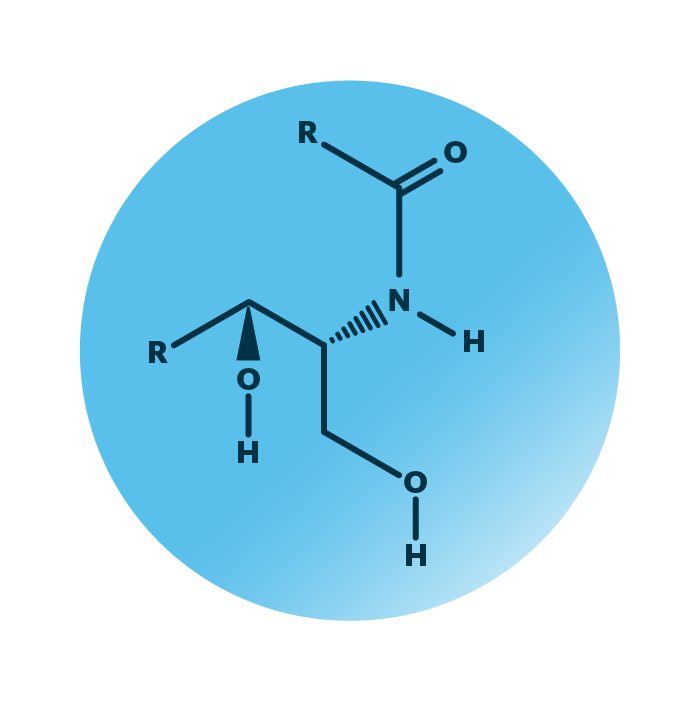Structure. Ceramides belong to the sphingolipids. Their structure consists of a sphingoid base or long-chain base, such as sphingosine, sphinganine, or phytosphingosine. An additional fatty acid is linked to the sphingoid base – this forms the ceramide backbone. The type of fatty acid is reflected in the name of the ceramide lipid classes: e.g. α-hydroxyceramides (ACer) contain an α-hydroxy fatty acid.
Function. Ceramides are common to animals and plants and may be found in some fungi and bacteria. They are essential intermediates in the biosynthesis of all complex sphingolipids, such as gangliosides and phosphosphingolipids. They are rapidly converted and present at trace amounts only, except for skin where the intercellular lipid matrix of the outermost skin layer consists of approximately 1/3 of ceramides.
Aside their biosynthetic role, ceramides function as second messengers in signal transduction and regulate cellular processes by impacting lipid raft properties, subdomains of the cell membrane. Ceramides with different long-chain bases, modifications, and fatty acids are produced in different cellular compartments, via different pathways, and over different time. Their structural composition influences their biological function.



